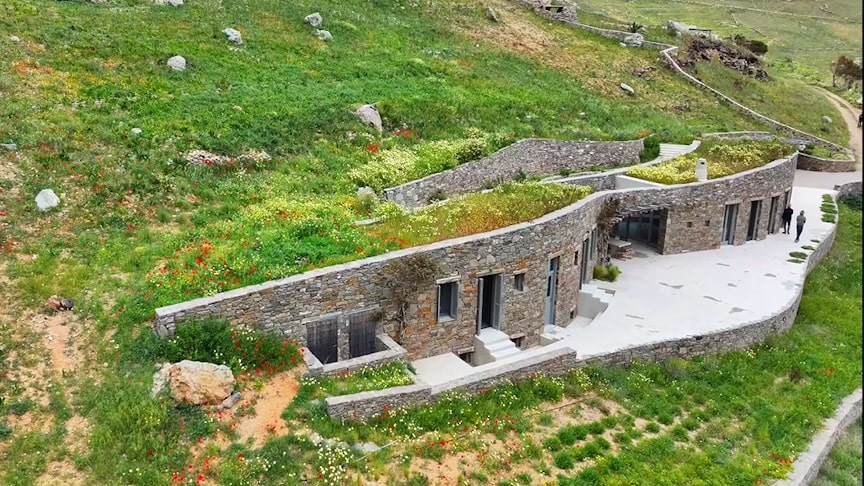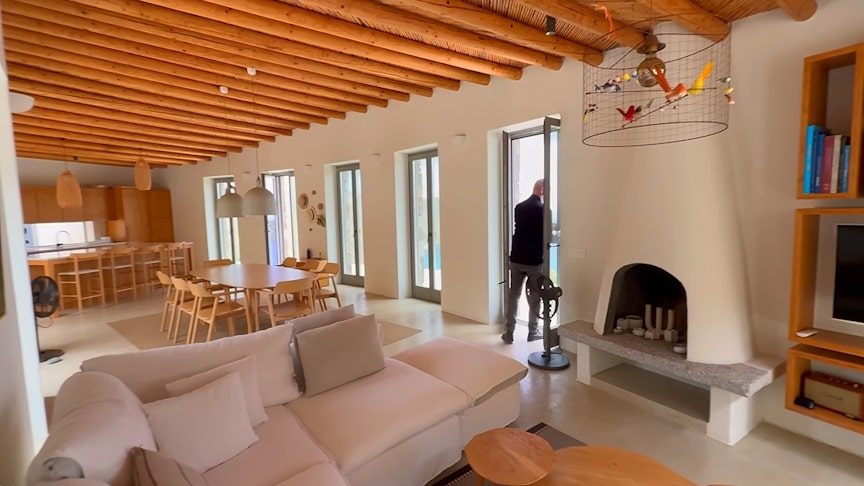Dug into the mountainside and built with the very earth excavated to make space for it, Xerolithi House is a natural, earth-sheltered home—designed both as a refuge from the elements and as a seamless extension of its environment.
source.image: Kirsten Dirksen
Inspired by the region’s dry stone walls—called xerolithies—and built using the same mortarless technique, the home mirrors the agricultural terraces and crumbling historic dwellings that once shaped this Cycladic landscape. Its curving stone walls rise like ribbons along the slope, offering protection from harsh winds and fast-moving wildfires, while blending almost invisibly into the terrain.
source.image: Kirsten Dirksen
To preserve this connection to place, architect George Sinas rejected the typical whitewashed forms of Greek island architecture in favor of long, low stone walls that echo the land’s past use. Each section gently shifts and bends with the hillside, creating a series of narrow, sheltered spaces. A dirt-and-vegetation-covered roof furthers the illusion of disappearance, allowing the home to nestle into the mountain as if it had always been there.
Advertisement
Inside and out, traditional materials shape the space—thick raw wood beams, hand-woven bamboo ceilings, and the same local stone used for centuries. Even indoors, the pergola-style roof follows the natural curves of the building, with beams arranged like vertebrae and bamboo woven in a fishbone pattern, casting soft, textured shadows throughout the home.
The home recently faced its first real test: a wildfire swept across the surrounding mountainside. Thanks to the earth-sheltered design and stone construction, the house remained untouched—only the bamboo pergolas suffered light scorch marks, a testament to the resilience of the structure and its materials. Xerolithi is a modern interpretation of traditional building — a house shaped by landscape, climate, and centuries of local knowledge.












